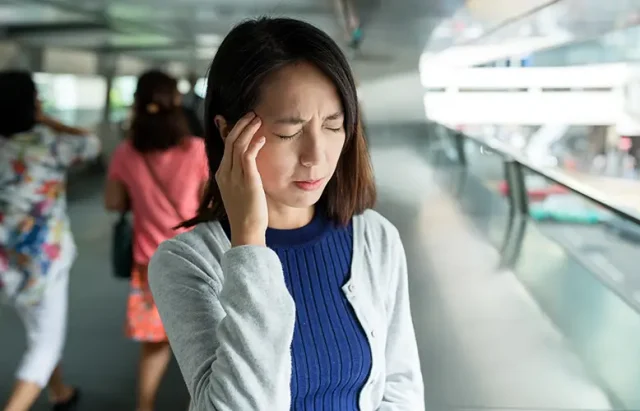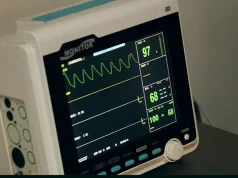
Travelling can be exciting, but if you live with migraine, it can also feel worrying. The thought of being stuck on a plane, train, or bus while a headache takes hold is not pleasant. Still, travel is possible. You just need to prepare well and know your limits. Many people manage long trips while keeping migraine under control. You can too, if you plan smartly and listen to your body.
Interestingly, some travellers say that when they distract themselves, such as reading light articles, playing phone games, or browsing leisure topics like £10 casinos not on GamStop, it helps them cope with stress before or during the trip. Everyone has different ways of staying calm, but the main point is that you should find what works for you and include it in your travel routine.
In this article, you will find practical tips for travelling with migraine.
Know Your Triggers
Migraine is often triggered by certain things. For some, it might be strong smells, flashing lights, or lack of sleep. For others, it can be food or drinks. Before you travel, write down your usual triggers. Knowing them is the first step. Once you have a list, you can plan how to avoid them.
For example:
- If bright lights set off your migraine, pack sunglasses and a hat.
- If certain foods cause problems, bring snacks you know are safe.
- If sleep is important, try to book flights or trains at times when you normally feel rested.
The more you understand your own triggers, the easier it will be to reduce risk during your trip.
Carry Your Medication
Never pack migraine medicine in checked luggage. Always keep it in your hand luggage, purse, or pocket. Delays, lost bags, or sudden attacks can happen. If your medicine is close, you can act fast.
Make sure to carry enough for the whole trip, plus extra in case of delays. A small pill box or travel pouch is handy. If you need injections or other special treatments, bring a doctor’s note in case airport security asks questions.
Stay Hydrated
Dehydration is a common migraine trigger. Travel often makes this worse, as you may forget to drink water or avoid it to reduce bathroom visits. Try to carry a refillable bottle. Sip small amounts often rather than drinking a lot at once.
Avoid too much coffee, strong tea, or alcohol. These can dehydrate you and also trigger headaches for some people. If you need caffeine, balance it with plenty of water.
Plan Rest Breaks
Travelling is tiring, even for people without migraine. Long journeys, crowds, and noise can make symptoms worse. To avoid overload, plan rest breaks. If driving, stop every couple of hours to stretch and breathe fresh air. If flying, use layovers to sit quietly in a calm area instead of rushing through shops.
Choose hotels or rentals where you know you can rest properly. A quiet room with blackout curtains can be more valuable than fancy extras. When booking, ask if you can get a room away from lifts, bars, or noisy streets.
Manage Stress
Stress is one of the strongest migraine triggers. Unfortunately, travel often includes stress: long lines, lost tickets, or language barriers. To reduce this, prepare in advance. Check in online, keep digital copies of tickets, and allow more time than you think you need.
Simple relaxation methods can also help. Breathing exercises, listening to calm music, or even short meditation apps can lower stress levels. Many travellers use noise-cancelling headphones to block sound on planes or buses.
Choose the Right Transport
Different people handle different transport options better. Some find flying stressful because of pressure changes and long security lines. Others dislike buses because of motion sickness. If possible, choose the method that suits your body best.
If you need to fly, drink water often, avoid alcohol, and bring earplugs to reduce noise. If trains are an option, they may be easier, as you can move around and often find quieter seats.
Control Your Sleep Schedule
Changes in sleep are a big problem for people with migraine. Even one night of poor rest can trigger pain. Before your trip, try to get enough sleep. If you are crossing time zones, adjust gradually. Go to bed and wake up a little earlier or later a few days before.
On the trip, stick to a simple sleep routine. Avoid heavy meals or screens right before bed. Earplugs and eye masks can help you rest in noisy or bright places.
Pack Migraine-Friendly Snacks
Airport food or roadside meals are often full of items that may trigger migraine, such as processed meats, cheese, or food with additives. To stay safe, pack your own snacks. Options like fruit, nuts, oat bars, or plain crackers are often good choices.
Having your own food also reduces stress if there are delays or if you cannot find safe options where you are.
Be Honest With Your Travel Partners
If you are travelling with friends, family, or colleagues, let them know you live with migraine. Explain what you may need, such as quiet time, slower pace, or emergency stops. This way, they will understand if you suddenly need to rest or leave an activity.
Most people are supportive when they know the situation. Hiding it often makes things harder.
Use Technology to Your Advantage
Modern apps can help a lot. You can use medication reminder apps, water trackers, or relaxation tools. Travel planning apps can store tickets, hotel bookings, and maps in one place, which reduces stress.
You can also search online for quiet lounges, medical help, or nearby pharmacies. Having this information ready makes you feel safer and better prepared.
Create a Migraine Travel Kit
A small kit can be a lifesaver. Pack it in a bag you always carry. Include:
- Migraine medicine
- Water bottle
- Sunglasses and eye mask
- Earplugs or noise-cancelling headphones
- Safe snacks
- A neck pillow for rest
- Cooling gel pads or a small ice pack (if possible)
This way, if an attack starts, you have tools ready.
Have a Backup Plan
Even with the best planning, migraine can still strike. Accept this possibility and prepare for it. Book flexible tickets if you can. Choose hotels with fair cancellation rules. Have travel insurance that covers medical care abroad.
Also, think about what you can do if you need to stop. For example, know where the nearest pharmacy or clinic is at your destination. This knowledge gives peace of mind.
Travelling with migraine is not easy, but it is possible. The key is to prepare, know your limits, and listen to your body. Focus on hydration, rest, stress control, and safe food. Carry your medicine and create a travel kit. Most importantly, give yourself permission to slow down when needed.
You do not have to give up travel because of migraine. With good planning, you can enjoy trips, discover new places, and create positive memories. Travel may look different for you, but it is still worth it.





